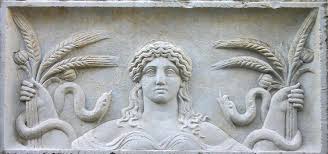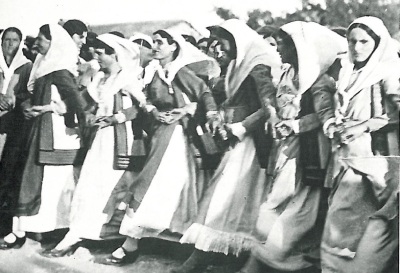PREFACE:
Since I seem to be unable to write much of anything new these days (although my mind is full of images) I have decided to return to posts from the past that I like a lot, posts that are "touchstones" along the path, to re-explore posts that lead me back to the "roots" I'm currently looking for when I go into the studio. Which, I see, is really the same work I've been pursuing for a very long time. Perhaps I just get a bit closer to the source. I hope.
So here is this entirely appropriate article (which I'll be improving along the way) from 2010 called "Marga". At the time I was thinking a lot about the synchronicities that continually seemed to occur in the course of my creative wanderings and searches. I had a brief internet coorespondance with an Englishman named Rober d'Amour after one of these posts on this Blog. He has since entirely disappeared, along with his Blogs, and this was probably never his name anyway. But I shall always be grateful to him for introducing me to the concept of Marga. So..............from the 2011 Blog post below, "footprints in the Mythic sand."

May, 2011
The "Blog sphere" has been a continuing source of information and inspiration - recently I received a fascinating correspondence from Robur D'Amour who introduced me to the concept of Marga. This is a term I've not run across before, but it resonates for me, another viewpoint of what I've fancifully called "conversations with the universe". Robur kindly gave me permission to quote some of his insights:
"'Marga' is a term that means following a path of signs or symbols that lead a person to their spiritual self. Marga is a bit like finding one's way through a labyrinth by reading signs that are given to you along the way by the unconscious."
“when people feel they are living the symbolic life the see themselves as actors in the divine drama.......That gives the only meaning to human life; everything else is banal and you can dismiss it. A career, producing of children, are all maya (illusion) compared to that one thing, that your life is meaningful.”I do not agree with Jung that a career, the producing of children, and all of the travails and joys and conflicts , the "banalities" of being human, are so easily dismissed as unimportant. Perhaps it was easier to see it so if one was a wealthy and respected man with a wife and servants to attend to those annoying tasks.......but I do agree with him that a symbolic life, a symbolic or, as Carolyn Myss*** termed it, an "archetypal path", can be profoundly meaningful.
"Adolf Bastian, a German anthropologist, has meant a great deal to me with just this main idea. The common themes that come out of the collective unconscious he calls elementary ideas.... In India the elementary ideas are called 'marga', (meaning) the path. Marga is from a root word 'mrg', which refers to the footprints left by an animal, and thus you follow that animal. The animal you are trying to follow is your own spiritual self. And the path is indicated by mythological images.
Follow the tracks of the animal and you will be led to the animal's home. Who is the animal? The animal is the human spirit. So, following these elementary ideas, you are led to your own deepest spiritual source." *
In practical terms, this means paying attention to what we see in the world around ourselves, to the synchronicities that occur, and to symbolic and meaningful "signs" that are presented to us - in dreams, and within the things we come across in our daily lives. The symbols - the "footprints" we see are presented to us by Fate, the Goddess, God, the unconscious, the Muse...........or whatever name you like to give to the source that we cannot see, yet what determines 'what happens next'. I just call it the Mystery.
Campbell described it as following Marga as a way to find one's own myth:
“…the way to find your own myth is to find those traditional symbols that speak to you, to use them, you might say, as bases for meditation. …Let the symbols play upon the imagination, act upon the imagination, and bring your own imagination into play in relation to these [symbols] and then you will be experiencing the marga or the power of these symbols to open things up for you” (Campbell, 2011)****
"The marga (path of symbols) that I seem to have been unwittingly following is a very curious one. I originally seemed to connect the word marga with Megara. Megara was popularised as the heroine in the Disney version of Hercules. It's 'only' a film for children, but it does, to some extent, bring the archetypes to life. Megara is a very vivid anima archetype."
I personally was somewhat amazed, speaking of my own "Marga", to read his further comment that:
"Megara was originally a Greek word for a fissure in the ground used
for sacred rites connected with beliefs about the underworld (the unconscious)
and Persephone-Hecate."
In 1993 I began a novel, the only novel I've ever written, called The Song of Medusa. I wrote it with artist Duncan Eagleson, and it was inspired by the writings of Riane Eisler**. It was based on the idea of an ancient shamanic priestess of an old-European, Earth Goddess culture. The priestess was called a "Singer", and she entered altered states of consciousness and prophesy by going into fissures or caves in the earth. This was called being "given to the Serpent". The Serpent arose, for me, from the importance of the Serpent or Dragon as a symbol for the telluric energies of the Earth, as a universal symbol of the renewal of life, and also for the early Earth Goddess. The novel was about the conflict that happened as this long lived priestess experienced her world shattered by the invasions of warlike, Indo-European tribes. As the little novel evolved, somehow, and surprising indeed to me, my own version of the myth of Persephone (I called her "Persepha") also evolved within the story, so much so that it became the novel's secondary theme.
I have recently (in 2018) had fun looking back at this little novel, and I illustrated it. I still like it, although I see it as rather naive now, a project that could have been more evolved but was not.
Dance of Persephone: The Trata of Megara by Laura Shannon
*From "The Marga Path", from The Hero's Journey Blog
“All truths wait in all things,
they neither hasten their own delivery nor resist it,
they do not need the obstetric forceps of the surgeon to be born
the insignificant is as big to me as any
(what is more or less than a touch?)
I believe a leaf of grass is no less
than the journey work of the stars.”
.......Walt Whitman
















